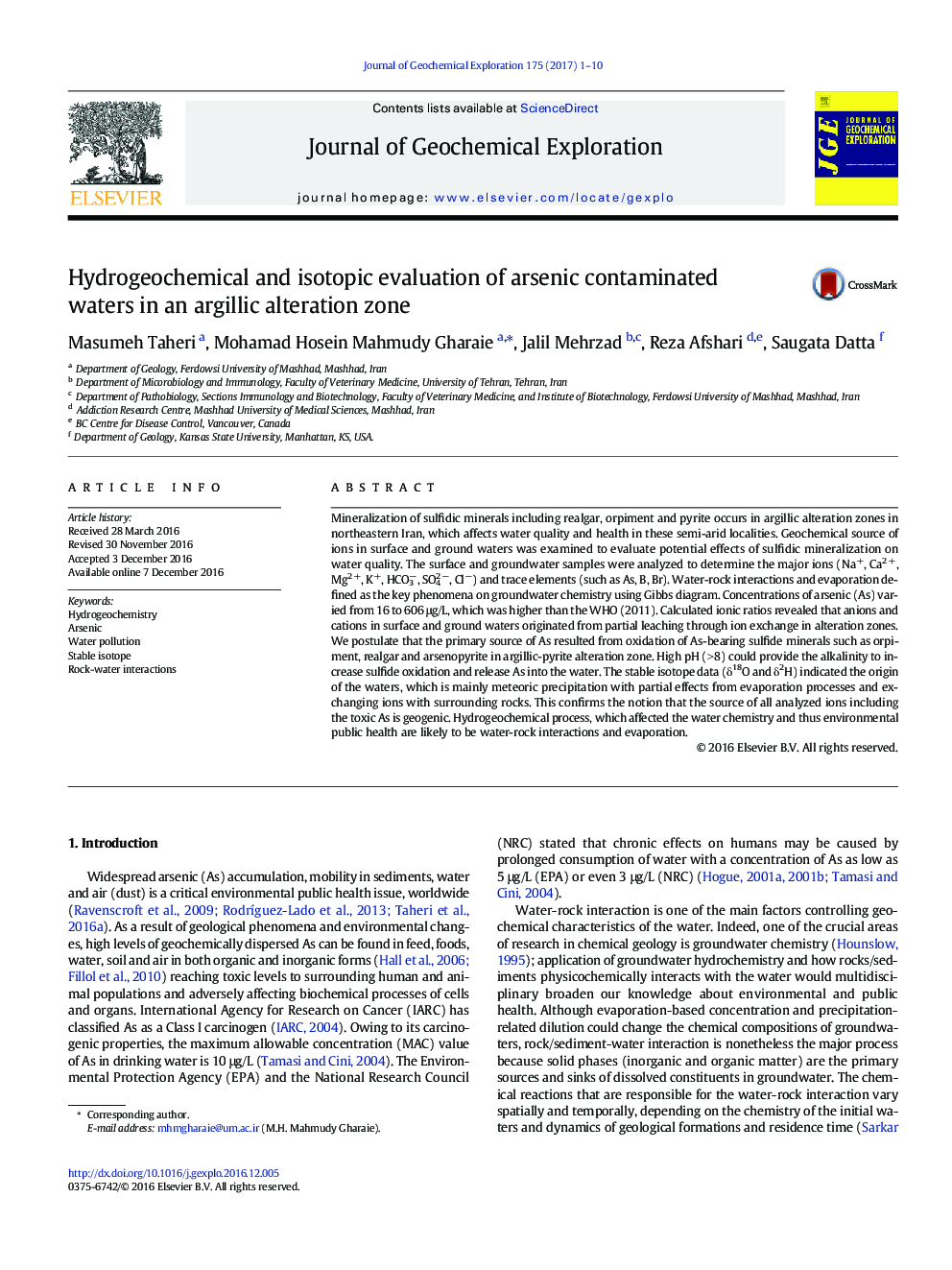| کد مقاله | کد نشریه | سال انتشار | مقاله انگلیسی | نسخه تمام متن |
|---|---|---|---|---|
| 5754562 | 1620884 | 2017 | 10 صفحه PDF | دانلود رایگان |
- The water quality in an argillic alteration zone was evaluated through hydrogeochemical and isotopic studies.
- High toxic ions especially As-contamination in surface and ground waters were documented in Chelpu area.
- Oxidation of As-bearing sulfide minerals was the primary source of As in the water resources around argillic alteration zone.
- Isotopic δ18O and δ2H indicates evapo-transpiration affect on ions enrichment of the original meteoric water.
Mineralization of sulfidic minerals including realgar, orpiment and pyrite occurs in argillic alteration zones in northeastern Iran, which affects water quality and health in these semi-arid localities. Geochemical source of ions in surface and ground waters was examined to evaluate potential effects of sulfidic mineralization on water quality. The surface and groundwater samples were analyzed to determine the major ions (Na+, Ca2 +, Mg2 +, K+, HCO3â, SO42 â, Clâ) and trace elements (such as As, B, Br). Water-rock interactions and evaporation defined as the key phenomena on groundwater chemistry using Gibbs diagram. Concentrations of arsenic (As) varied from 16 to 606 μg/L, which was higher than the WHO (2011). Calculated ionic ratios revealed that anions and cations in surface and ground waters originated from partial leaching through ion exchange in alteration zones. We postulate that the primary source of As resulted from oxidation of As-bearing sulfide minerals such as orpiment, realgar and arsenopyrite in argillic-pyrite alteration zone. High pH (> 8) could provide the alkalinity to increase sulfide oxidation and release As into the water. The stable isotope data (δ18O and δ2H) indicated the origin of the waters, which is mainly meteoric precipitation with partial effects from evaporation processes and exchanging ions with surrounding rocks. This confirms the notion that the source of all analyzed ions including the toxic As is geogenic. Hydrogeochemical process, which affected the water chemistry and thus environmental public health are likely to be water-rock interactions and evaporation.
Journal: Journal of Geochemical Exploration - Volume 175, April 2017, Pages 1-10
